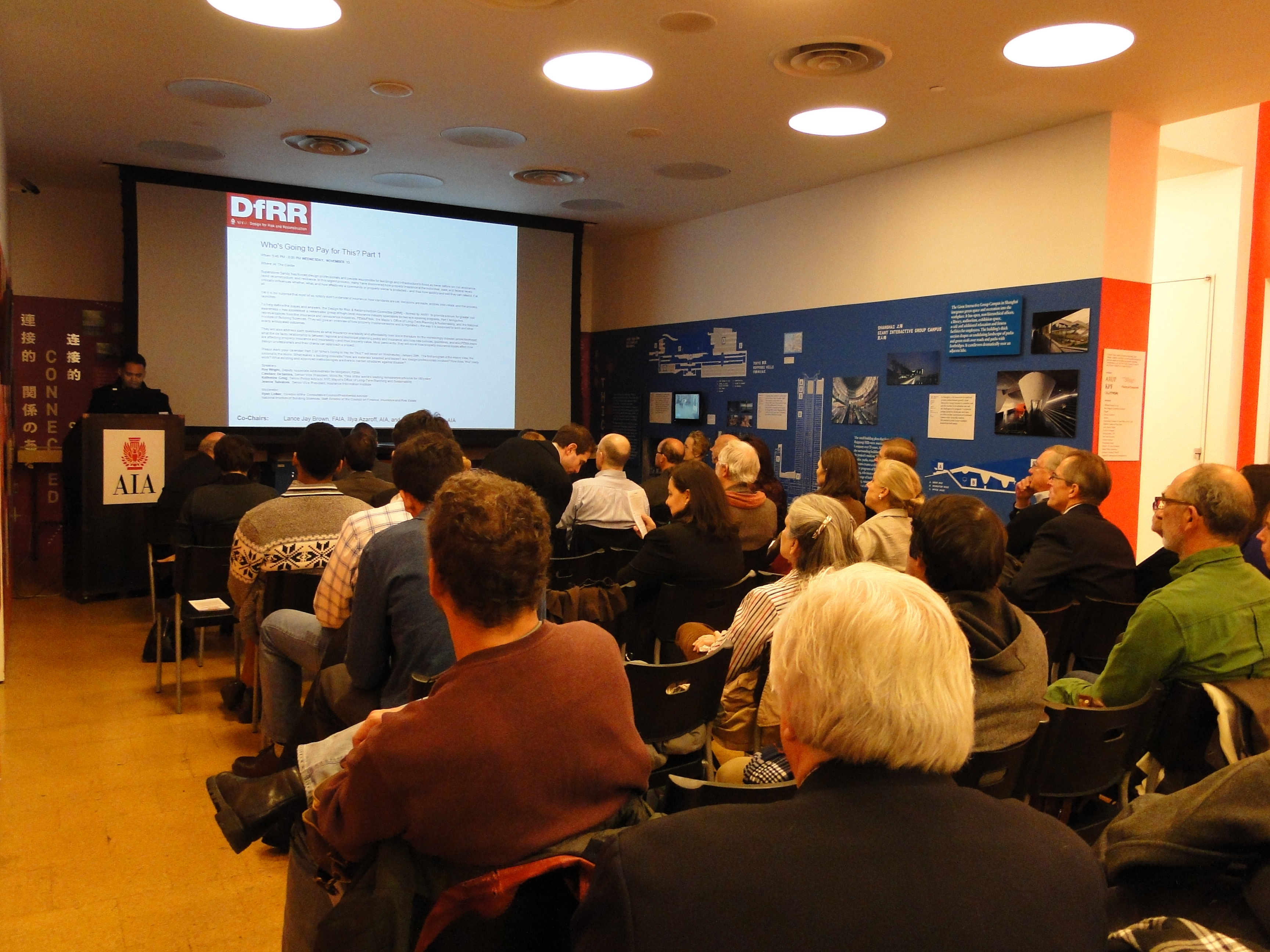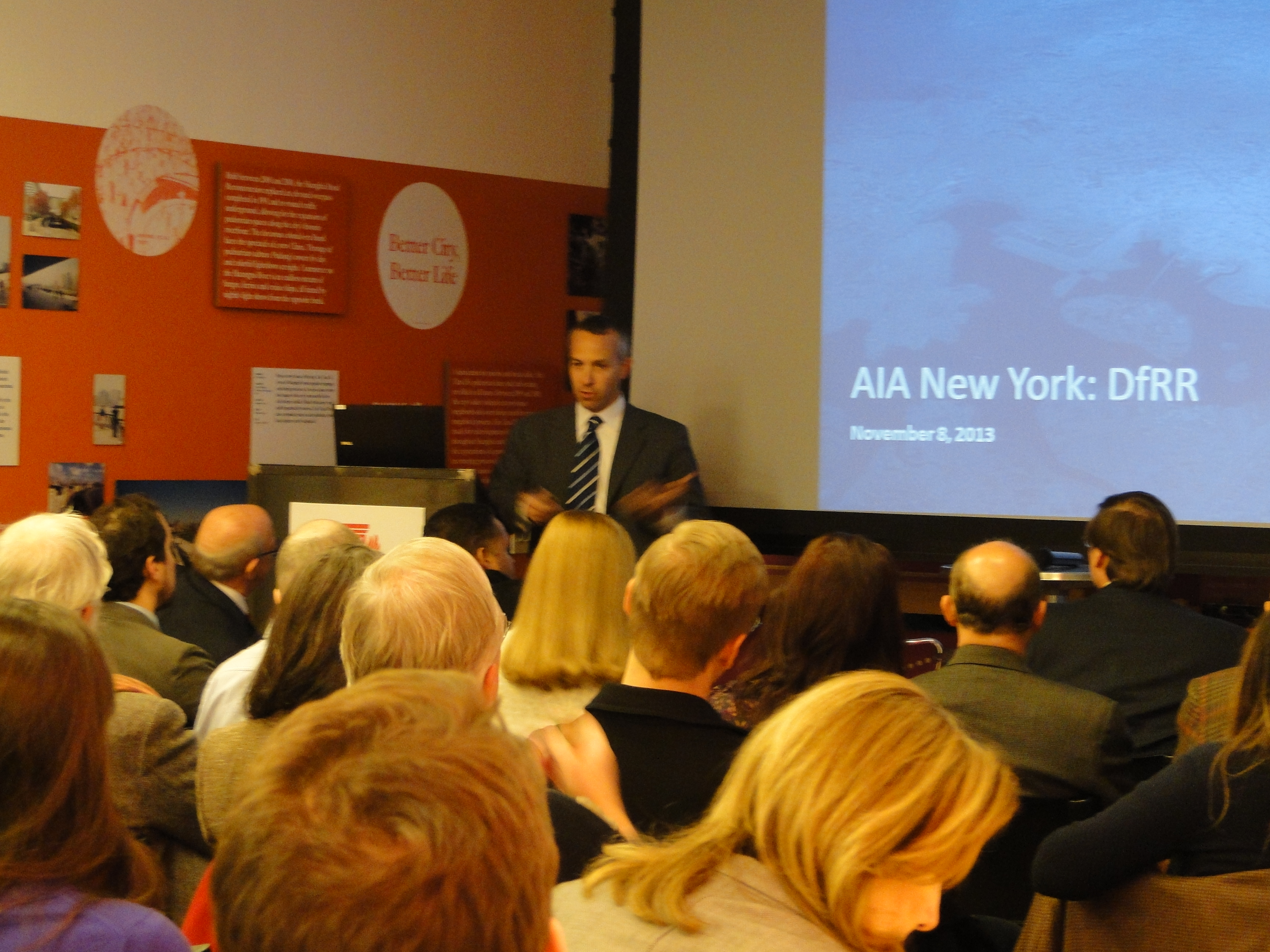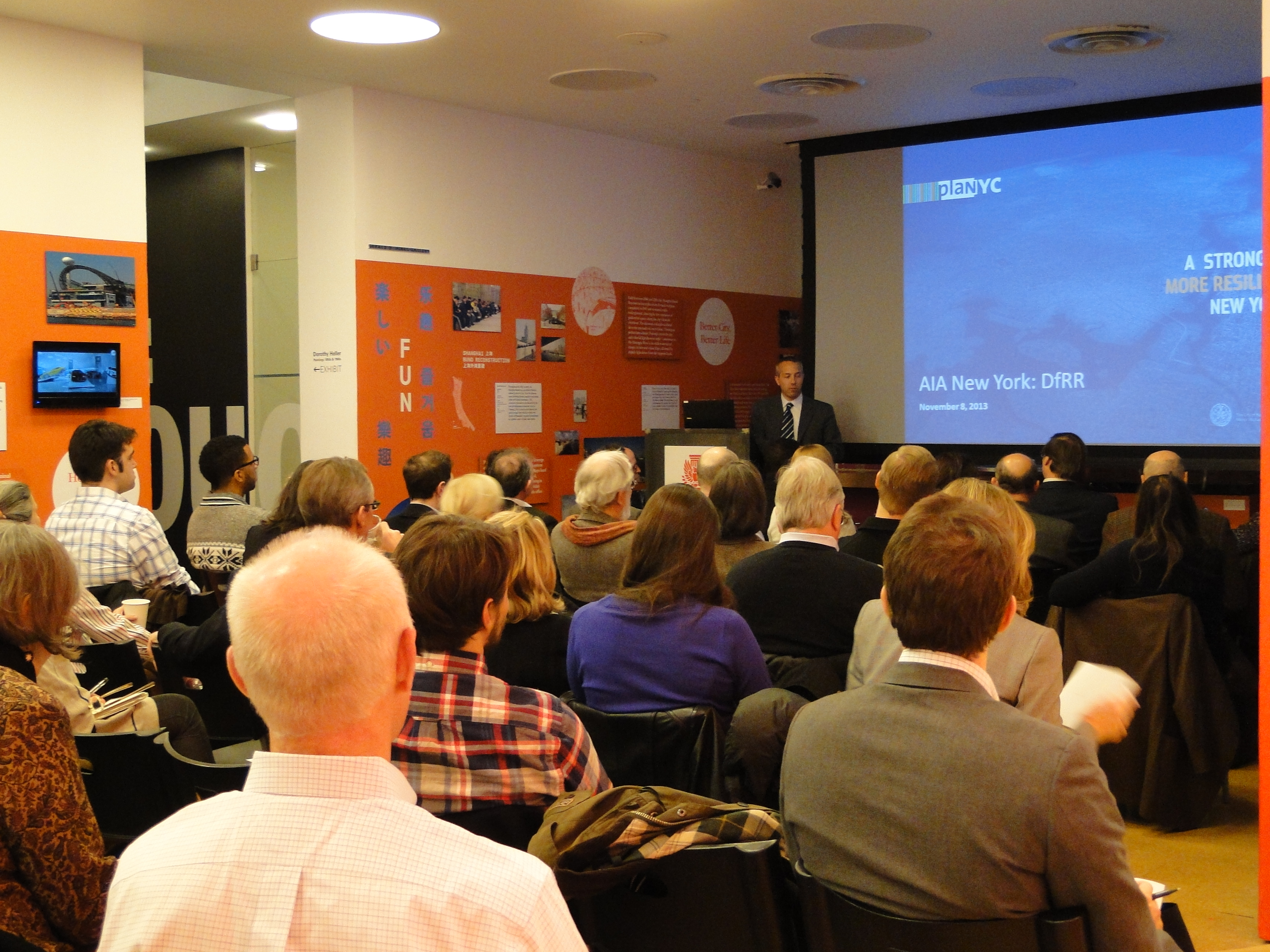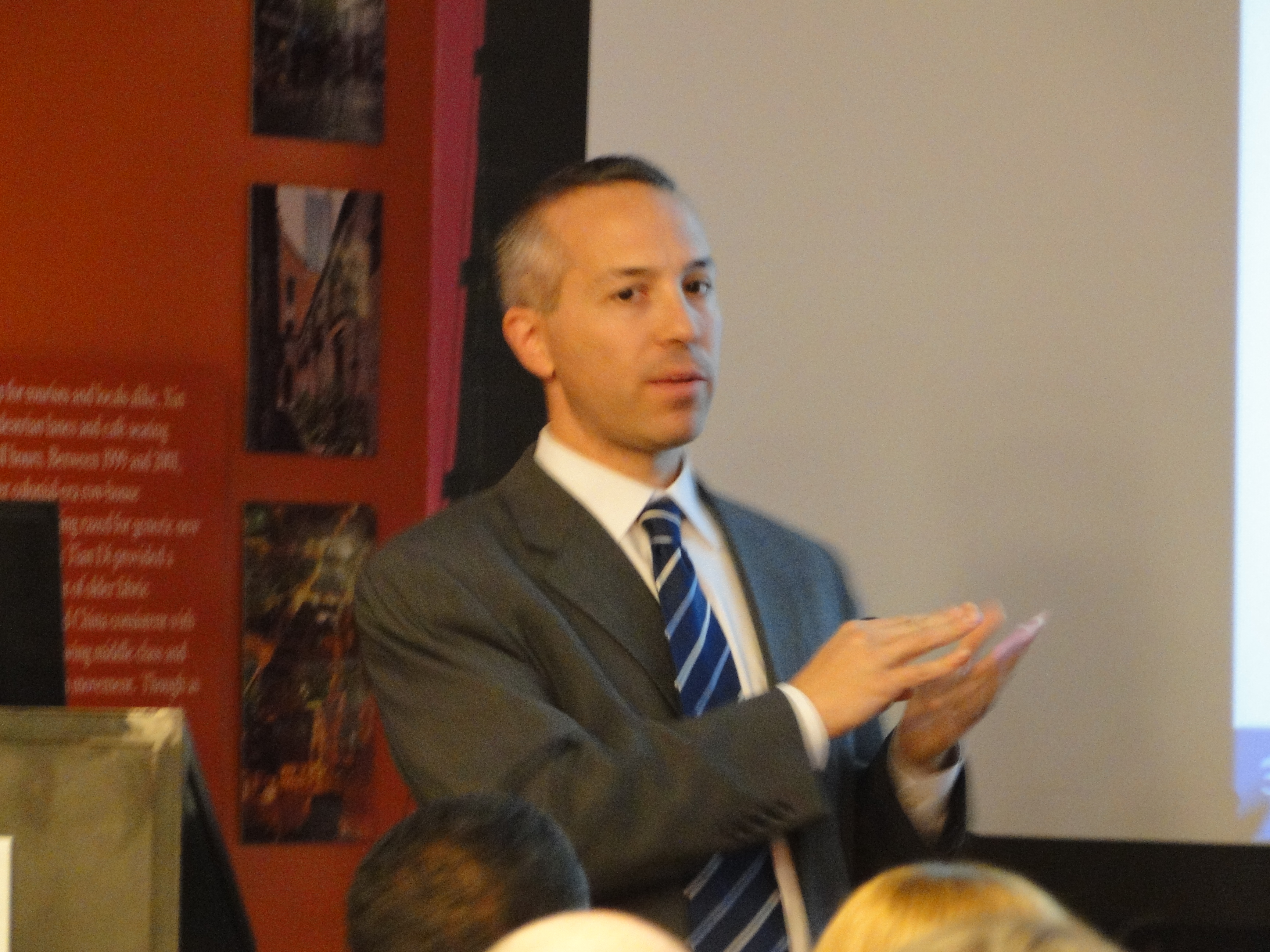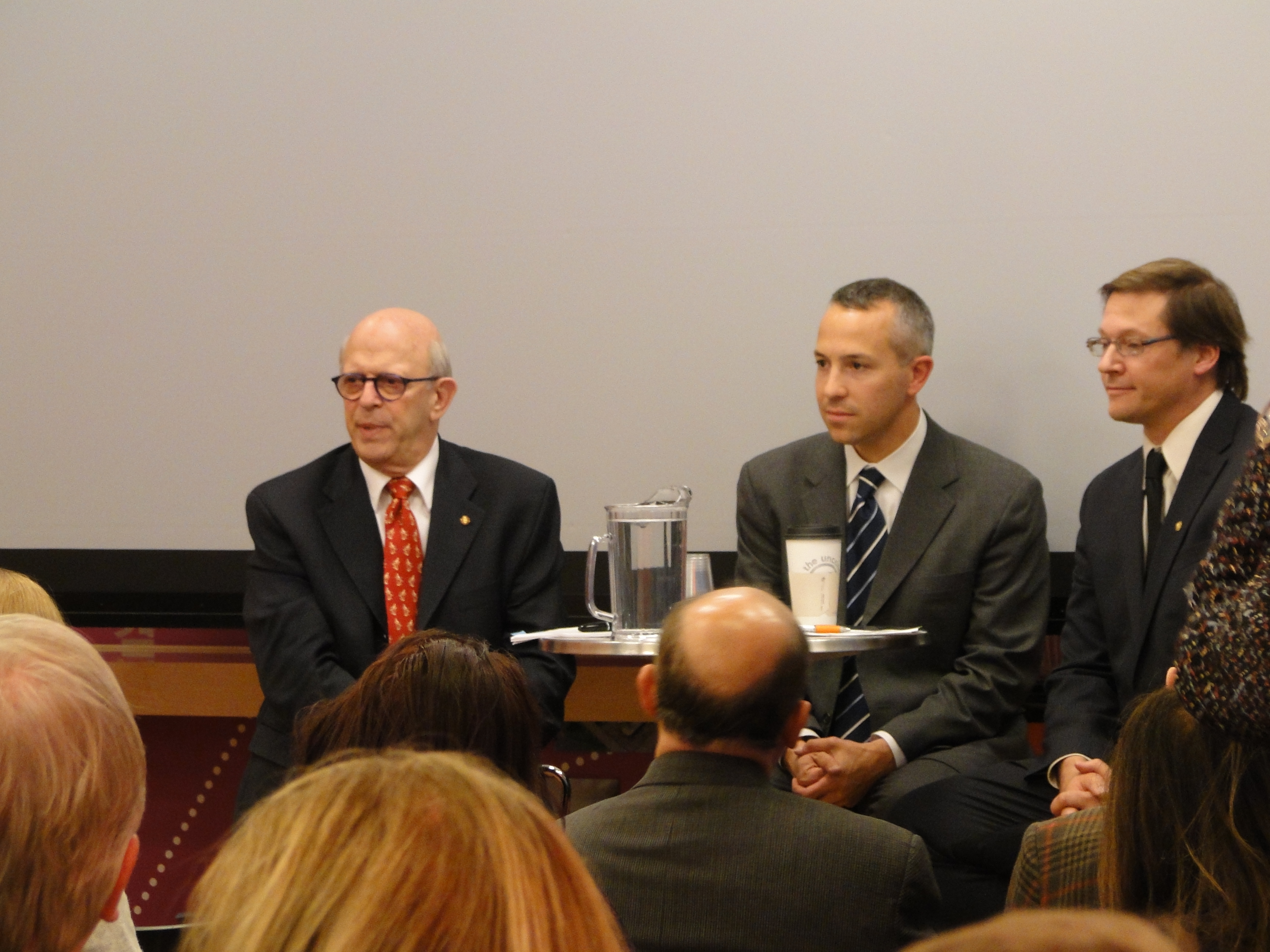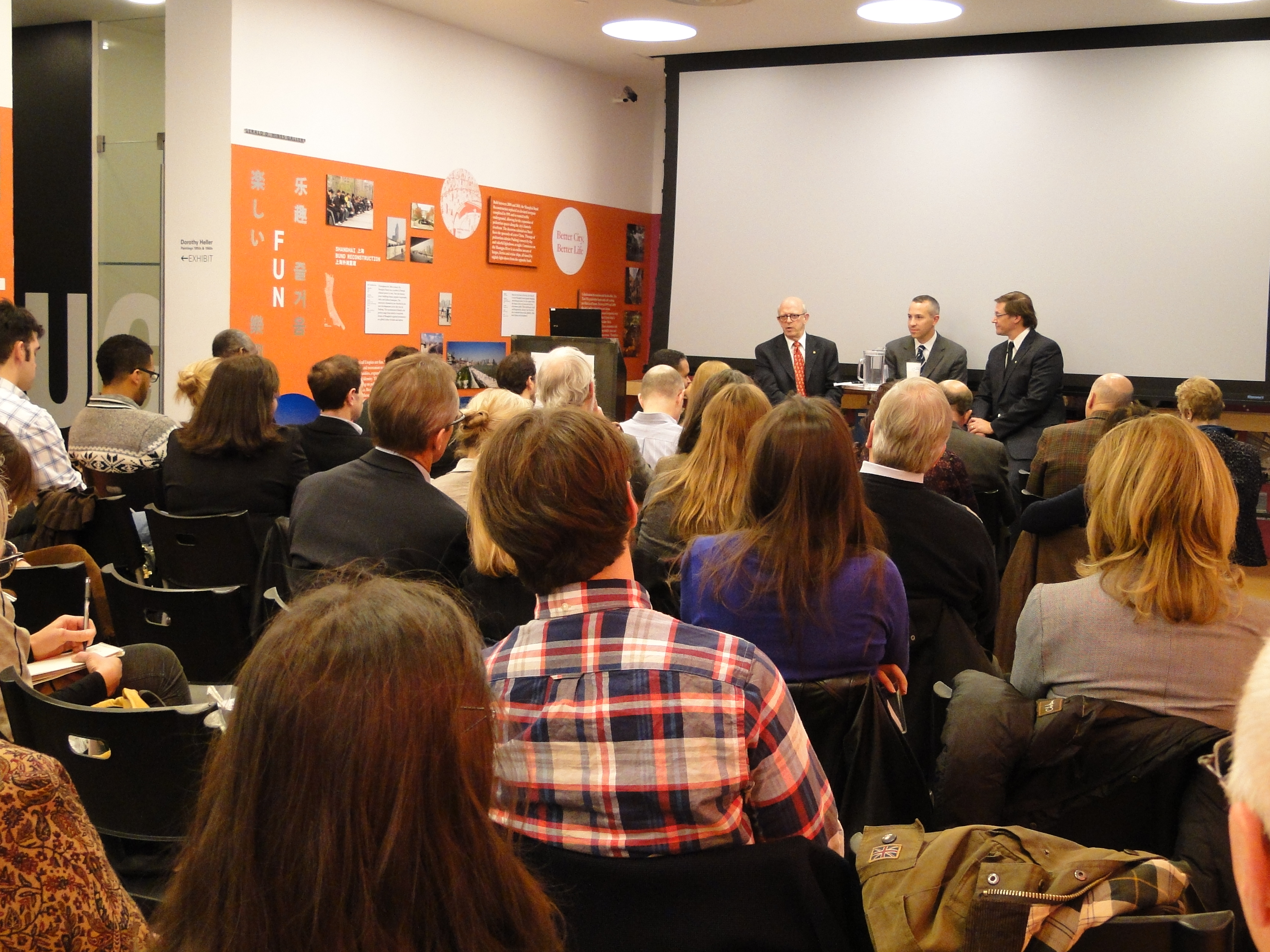by: Bill Millard
Roughly a year after New York endured Superstorm Sandy, with current headlines showing the devastation caused by a massive typhoon that wracked the Philippines, the public and the architectural profession are acutely aware of the recurrence, inescapability, and gravity of severe climatic events. The Center for Architecture’s Helfand Gallery puts the winning entry in the For a Resilient Rockaway Competition (FAR ROC) by White Arkitekter, Gensler, and Arup prominently in the public view. City government has codified outgoing Mayor Michael Bloomberg’s commitment to resilient design by creating the Director of Resiliency position within the Office of Long-Term Planning and Sustainability (an office that AIANY, in A Platform for the Future of the City, recommends strengthening by elevating its director to commissioner level). At the risk of a bad pun, there is something in the air.
More precisely, said Director of Resiliency Daniel Zarrilli in a detailed, sobering, yet resolutely upbeat presentation, civic institutions are “converging on consensus” about the value of preparing our coastlines, buildings, and infrastructure for disaster. We can’t make these entities stormproof or climateproof, Zarrilli observed, and we can’t expect future risks to resemble recent ones (Sandy, he pointed out, was idiosyncratic in important ways), but we can “rebuild smarter.” The relevant time horizon for action is between now and about 2050; beyond that point, uncertainties are too complex and extreme to manage; yet applying the lessons from Sandy can mitigate damage from future events and save lives. Whatever forms those events take, the region can realize positive spillover effects from ambitious-yet-achievable steps toward climate readiness based on multiple defensive layers and modification – not abandonment – of the waterfront.
Sandy killed at least 44 people and caused more than $19 billion in overall damage, including both building destruction and infrastructure disruption, but Zarrilli prefers to accentuate the positive. He distilled the implications of the June report by the city’s Special Initiative for Rebuilding and Resiliency (SIRR), “A Stronger, More Resilient New York,” into a half-dozen key points. First, modern building codes work: 73% of the red-tag structural damage involved pre-1961 buildings, generally one-story bungalows with combustible, fragile timber frames. The dichotomy of “green vs. gray” infrastructure is unimportant: hybrid solutions performed well. Infrastructural systems are linked at the regional level, particularly by power: “when the power goes out, everything else goes out,” including supply chains for gas and other resources as well as the more obvious MTA. Prepared communities, marked by local social cohesion, recover more quickly than disorganized ones. Though tide cycles exacerbated its surge and wind fields drove it in an unusual “left hook” pattern into New Jersey instead of out to sea, Sandy was by no means a worst-case scenario; had it struck during an August heat wave, power disruption would have been far worse. Finally, the belief that climate change entails future vulnerability for New York and other coastal cities needs rethinking: we’re vulnerable now.
Beyond the more measurable forms of physical resilience, SIRR’s analyses also consider social and economic resilience, including policies that affect behavior related to vulnerability and recovery. Among these, the National Flood Insurance Program (NFIP), managed by the Federal Emergency Management Agency (FEMA), is critically important – and riddled with perverse incentives. The maps of flood-prone areas used by FEMA at the time of Sandy hadn’t been seriously revised since 1983 and drastically underestimated the risks. “FEMA looks at the world as, you’re either elevated above base flood elevation or you’re not, and your premium is derived accordingly,” Zarrilli said. The assumptions and calculations are all due for an overhaul. NFIP is considered insolvent; many property owners have been unaware they need insurance at all; uptake rates are low; people are essentially being subsidized to live in high-risk areas. The bipartisan Biggert-Waters Flood Insurance Reform Act of 2012 introduced risk-based rates, which SIRR supports in principle, but the fast implementation of this act amid rising insurance rates strikes Zarrilli and his colleagues as disruptive to neighborhoods. The city instead proposes a series of reforms that will make it easier for New Yorkers, especially those at low-income levels, to afford flood insurance. (The insurance aspect of resilience was explored in more detail in Part 1 of “Who’s Going to Pay for This?” on 11.13.13.)
Design for Risk and Reconstruction Committee (DfRR) Co-chair Lance Jay Brown, FAIA, observed that “nature does not respect political boundaries, and to some extent, I don’t know that politics respects natural boundaries.” Public investments in risk reduction – largely led at the metropolitan level, since federal contributions are unreliable when some factions in Congress believe in pre-Keynesian austerity and/or disbelieve in climate science altogether – are one aspect of a coherent civic response. The expertise of the architectural community, which Zarrilli addressed directly for the first time at this event, is another essential aspect. Both the city and the AIANY Chapter are at transitional points: with Mayor-elect Bill de Blasio about to put his populist principles into action, Brown will soon assume the AIANY presidency and guide its 2014 activities under the theme “Civic Spirit, Civic Vision.” Though resilience was one of the quieter themes in de Blasio’s campaign, it is an area where the expertise displayed by Zarrilli and by DfRR members can connect one sense of civic vision with another.
As Brown, DfRR Co-chair Illya Azaroff, AIA, and audience members questioned Zarrilli about the path of ideas from the world of think tanks and task forces to that of specific forms of implementation, it became increasingly apparent that Bloomberg’s statements about “not abandoning the waterfront” will need translation into purposeful protective measures, not just comforting bravado, by the next administration. Returning displaced residents to their homes is an urgent short-run aspect of recovery; ensuring they can afford to stay there, or else smoothing their transition to somewhere safer (a political challenge around New Orleans in the post-Katrina precedent case, Brown recalled), makes long-range sense. Another vital step, Azaroff pointed out, would be concrete recognition that the more than 400 architect-volunteers who responded to Sandy within the first 48 hours represent an irreplaceable civic resource; these professionals would benefit from the legal protection of Good Samaritan legislation.
The New York of 2050 will look different, Zarrilli noted, but its development is “not rocket science.” Physical designs that minimize damage are likely to be more complex, and more cost-effective, than large offshore barriers: at some sites, they may take forms like inland swales (Coney Island, Zarrilli illustrated, had more surge damage from in-lying Coney Island Creek than from the ocean, and closing off the creek is an option about to be fleshed out through an RFP). The levee-based Seaport City proposal represents one hypothetical measure; Brown noted that Hamburg’s Hafen City and Tokyo’s Roppongi Hills illustrate ways other vulnerable regions are already responding. In design, planning, policy, residential choice, and other aspects of public and private life, Zarrilli summed up the new and permanent conditions: “We have to apply the new lens of resiliency to everything we do.”
Bill Millard is a freelance writer and editor whose work has appeared in Oculus, Icon, The Architect’s Newspaper, and other publications.
Event: Conversation with Daniel Zarrilli, Director of Resiliency at the Mayor’s Office of Long-Term Planning and Sustainability
Location: Center for Architecture, 11.08.2013
Speakers: Daniel Zarrilli, Director of Resiliency, Mayor’s Office of Long-Term Planning and Sustainability; Lance Jay Brown, FAIA, and Illya Azaroff, AIA, Co-chairs, AIANY Design for Risk and Reconstruction Committee (interviewers); Richard Gonzalez, AIA, Principal, Richard Gonzalez Architecture (introduction)
Organizers: AIANY Design for Risk and Reconstruction Committee








